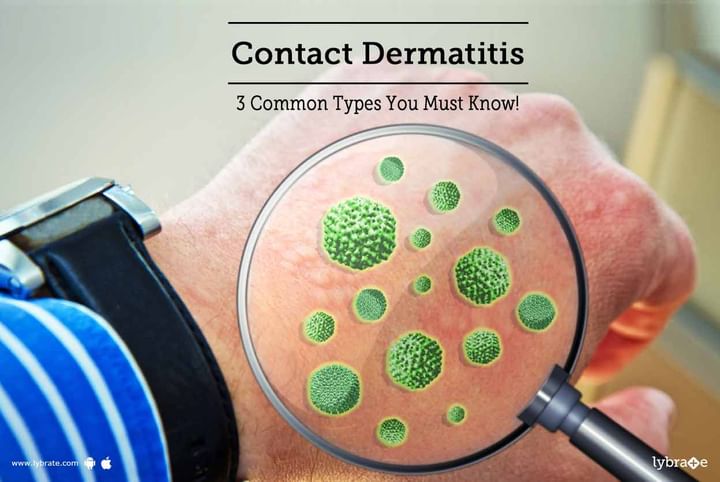Contact Dermatitis - 3 Common Types You Must Know!
The condition which occurs on exposure to foreign substances and causes the skin to become red, itchy and inflamed is known as contact dermatitis. It is commonly known as a rash. Although most of the reactions to contact dermatitis are not serious, they can be very irritating till the itching subsides. The causes of contact dermatitis are usually case specific; they vary according to the different types of this disease.
The types of contact dermatitis are:
- Allergic contact dermatitis: This condition occurs when an allergic reaction is developed after exposure to foreign substances. The reaction occurs with a release of inflammatory chemicals that causes the skin to become irritated and itchy. If a person has eczema, he or she can suffer from this kind of rash. Causes of allergic contact dermatitis include:
- Latex gloves
- Poison Oak
- Jewellery (gold or nickel)
- Perfumes and chemicals in skincare and cosmetic products
- Irritant contact dermatitis: Contact between the skin and a toxic material causes Irritant contact dermatitis. They can be sub divided into two categories, namely chemical irritants and physical irritants. Some of the toxic substances that cause this condition include battery acid, drain cleaners, detergents, kerosene, pepper spray and bleach. The physical causes of Irritant contact dermatitis include low humidity from air conditioning, a variety of plants and so on so forth. The condition tends to become more painful, rather than itchy.
- Photo-contact dermatitis: This is a very uncommon type of contact dermatitis which is caused due to the exposure of some active ingredients in sunscreen to sunlight. When sunlight is not present, the sensitive chemicals in the substances are not harmful.
Symptoms
Symptoms of contact dermatitis depend upon the causes of this condition. The symptoms of allergic contact dermatitis are:
- Dry or oozing blisters
- Dry, flaky and scaly skin
- Redness of the skin
- Extreme itching
- Burning of the skin with or without sores
- Leathery or dark appearance of the skin
- Hives
- Swelling, particularly on the face, in your eyes or groin regions
Symptoms of Irritant Contact dermatitis can be slightly different. They include:
- Blistering
- Swelling
- Cracking due to extreme dryness
- Ulcerations
- Stiff or tightened skin
- Open sores that form crusts
If you wish to discuss about any specific problem, you can consult a dermatologist.



+1.svg)
